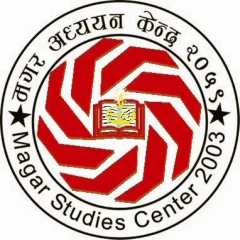Hithcock, John T. (1966). The Magars of Banyan Hill. USA: Holt, Rinehart and Winston, Inc. Annotation by: Dr. Govind Prasad Thapa
This book is the first detailed anthropological study on Magar community of Nepal. The author has described about the life-pattern of Magar people. The book contains information about the land and settlement pattern, family, culture, customs, language, caste, economic activities and politics of Magar people. The author’s “primary reason for doing research in Nepal and among the Magars was to answer a question about the social and cultural effects of different ecological niches, it was also to explore a region barely known to anthropologists and to learn about the home life of a people whom the world knew primarily as extraordinarily good and tough infantrymen.” As this book contains more on the life-cycle of Magar community, it serves little on the origin and historical background of Magar. The author accepts the fact that the “origins of Magars are lost in obscurity.” He further argues that, “The tribe seems to have been part of a very ancient influx of Mongoloid, Tibeto-Burman-speaking peoples into Nepal, probably from the north and east. It also seems probable, in view of differences between its northern and southern halves, that the tribe represents two different streams of migration.” It is interesting to know what these people have to tell about their migration. When asked where they came from they answer, “We have lived here always.” The author has also recommended list of some books related with Gurkha and Magars of Nepal.
Hodgson, Brian H. (1991). Essays on the Languages, Literature and Religion of Nepal and Tibet: Together with Further Papers on the Geography, Ethnology and Commerce of those Countries. New Delhi: Asian Educational Services, (First published on 1874). Annotation by: Dr. Govind Prasad Thapa
This work of Hodgson has two parts—part I covers the languages, literature, and religion of Nepal and Tibet. The part II covers the physical geography of the Himalaya, the aborigines of the Himalaya, the origin and classification of military tribes of Nepal, the Chepang and Kusunda tribes of Nepal, the cursory notice of Nayakot and of the remarkable tribes inhabiting it, the tribes of northern Tibet and Sifan, the colonization of Himalaya by Europeans; and the commerce of Nepal. The author has written about the language of Nepal: “Within the mountainous parts of the limits of the modern kingdom of Nepaul, there are thirteen distinct and strongly-marked dialects spoken. These are the Khas or Parbattiya, the Magar, the Gurung, the Sunwar, the Kachari, the Haiyu, the Chepang, the Kasunda, the Murmi, the Newari, the Kiranti, the Limbuan, and the Lapachang. With the exception of the first (which will be presently reverted to) these several tongues are all of TransHimalayan stock, and are closely affiliated. They are all extremely rude owing to the people, who speak of them having crossed snows before learning dawned upon Tibet, and to the physical features of their new home (huge mountain barriers on every hand) having tended to break up and enfeeble the common speech they brought with them.” The author has written in details about the languages, literature of ‘Nepaul’ and Tibet, the religion of Bhot, list of Buddhist works, Buddhist triad and cosmogony, and on Buddhist philosophy.
